Latest news for Oct 2017
13 October 2017 | Paul
This month we're discussing your options when it comes to selecting and wiring a fusebox and talking about the differences between parallel and series connections when wiring batteries together. Enjoy!
Which Fusebox?
| Fitting a fusebox between your leisure battery and your 12V circuits is an essential bit of safety equipment when building a 12V system but it can be confusing when faced with various fusebox options. Here we'll explain the main types available together with their advantages and disadvantages: |
| 1. Fusebox with individual power supplies for each circuit These fuseboxes only distribute power on the +ve side of the circuit and each circuit must be fed with an individual +ve supply cable. These are inexpensive but multiple cables can make installation time-consuming and complex if you have lots of circuits. The -ve connections for each circuit cannot go through the box so need to be taken back to a suitable common -ve connection point or directly to the battery -ve terminal. | 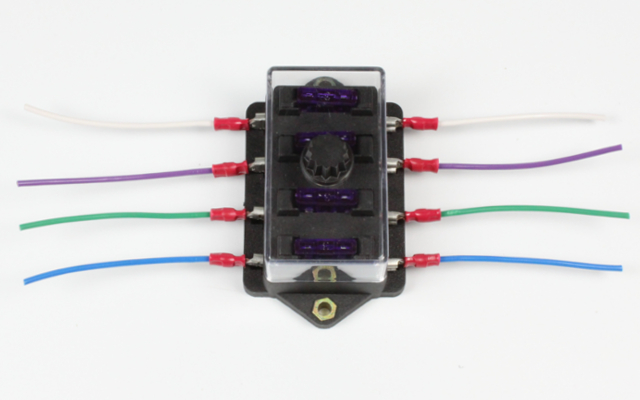
|
| 2. Fusebox with common power supply for all circuits These fuseboxes tidy up the input wiring by having all circuits connected via an internal busbar (essentially a metal plate), so only one +ve power supply cable is required. These make installation cleaner and quicker but they tend to be slightly more expensive than boxes with individual power supplies for each circuit. Again, the -ve side of each circuit cannot go through the box so need to be dealt with externally. | 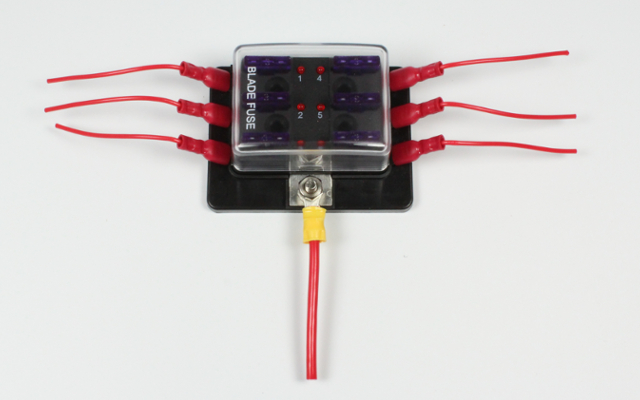 |
| 3. Fusebox with common power supply for all circuits, plus negative connections These boxes go one stage further and have an internal busbar for the -ve side of each circuit as well as for the +ve. This means that you only need to wire one +ve cable and one -ve cable into the box, keeping the inputs really neat and tidy. The -ve connections for each circuit can then be taken to the negative busbar in the box, so all your connections are in one place. In this example we've used twin-core cable for each circuit which makes the installation even more tidy. | 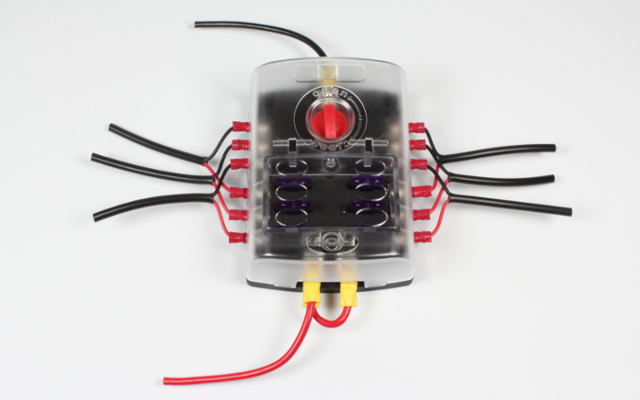 |
| Conclusion Although more expensive, fuseboxes with busbars for both +ve and -ve sides of the circuits (example no. 3 above) are the option we recommend for most installations. They keep the number of connections to a minimum, make fault finding easy (no -ve connections hidden behind carpeted linings that are difficult to access) and, when combined with twin core cable, can result in very neat wiring installations. These are available in 6-way and 12-way versions. |
Battery Wiring - Parallel or Series
| One topic that causes a bit of confusion is the concept of wiring batteries together so we thought we'd take a couple of minutes to provide a brief overview. |
| PARALLEL WIRING If you want to increase your battery storage capacity by wiring two or more batteries together then you need to wire them in parallel. This means joining +ve to +ve and -ve to -ve. For two 12V batteries of the same size this will double your capacity in Ah but keep the voltage the same. | 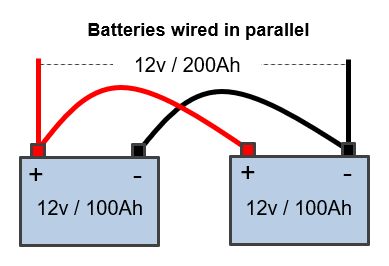 |
| SERIES WIRING If you want to increase your battery voltage by wiring two or more batteries together then you need to wire them in series. This means joining the +ve of one battery to the -ve of the other. For two 12V batteries of the same size this will double your voltage but keep the capacity in Ah the same. | 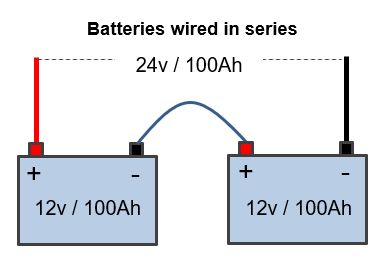 |













